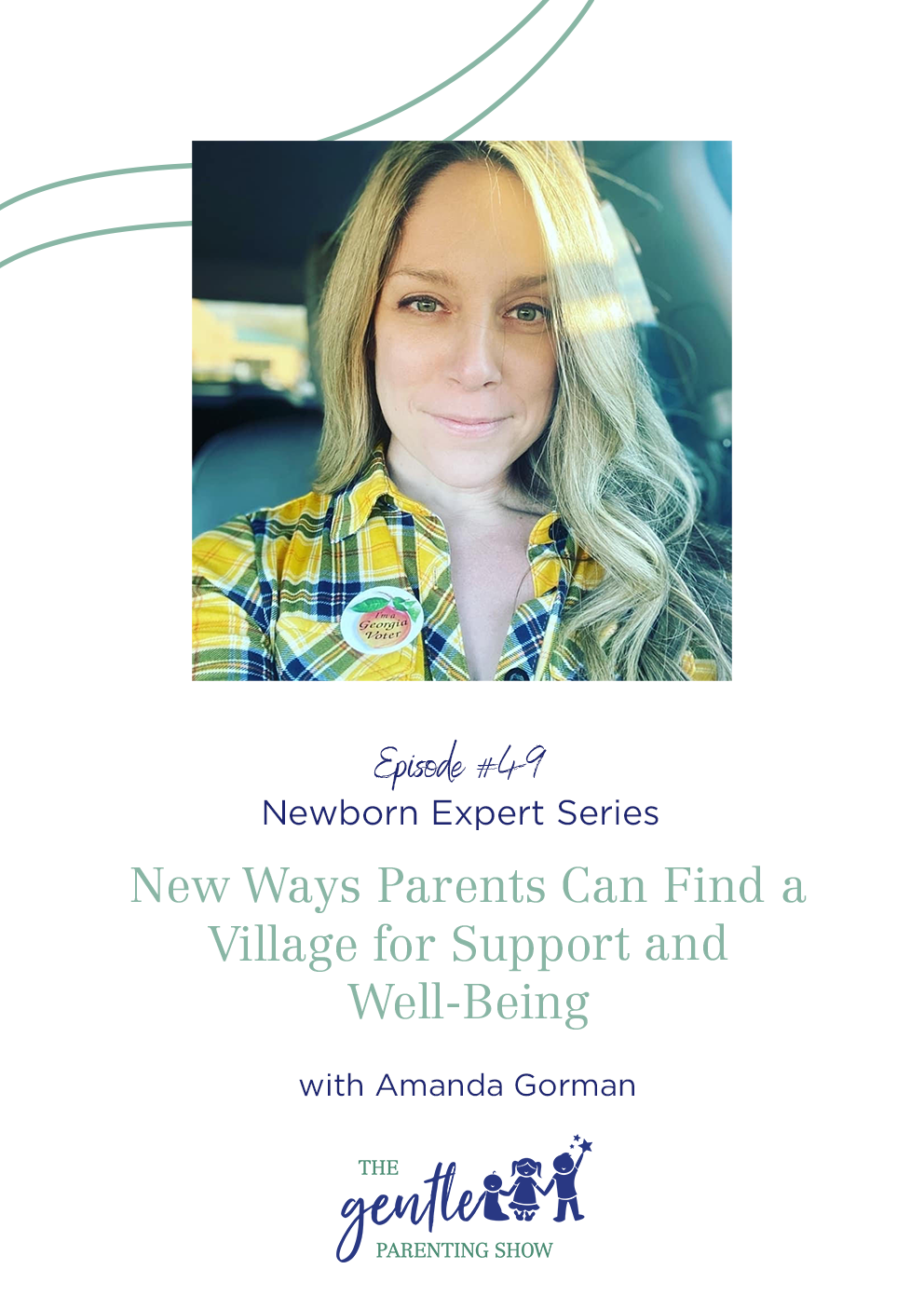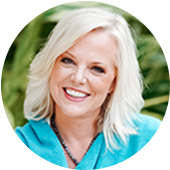In today’s special Newborn Series episode of the Gentle Parenting Show, Kim is joined by Amanda Gorman. Amanda is a wife, mother of two, and the host of the “Finding Your Village” podcast. She is also a childbirth educator and is passionate about birth, postpartum, and parent mental health. Kim and Amanda discuss how to find your village as a parent, and how a village is more than just people around you.
What Does it Mean to Find a Village?
Kim divulges that when she had her first baby, it was much harder than she thought. She was wondering why no one had told her that this is how parenting was. Kim was desperate to find a way to get her baby to sleep but felt the only option out there was Ferber. She knew she had to do something else (which is why she created Gentle Sleep Solutions).
An important part of finding a village is to realize that as a parent, you have options. These options can match your parenting values and your child’s temperament. Amanda says that finding what works for you while parenting is so important. This is because the mental health of the whole family matters. Not just the baby, not just the parents, but the whole family.
When Amanda was creating her podcast, she went in with the idea that she wanted to teach parents how to get it “right”. But, she soon realized that there is no right or wrong way to parent. What really matters is that you surround yourself with resources and like-minded people to support you in your decisions. This is a village. Amanda says “you can create a village not by people who are by you, but you can also add to your village by information and resources that are out there.”
When Amanda was a new mom, her village wasn’t just people. It was books (like Kim’s best-selling sleep book), podcasts, audiobooks, and virtual support. Creating a village is more about connection than doing it right. There doesn’t have to be these “mommy-wars” over every little choice in parenting. The right village will make you feel supported in what you want to do as a parent.
Finding a Village Through Pregnancy and Birth
Amanda says that one of the most important things in pregnancy and birth is to be kind to ourselves. Whether it’s with birth and delivery or the temperament of our baby, it’s important to learn how to let go of our previous expectations. Somewhere along the way in life, we get these expectations about birth and parenthood. A lot of birth plans are created around these expectations that we’ve gathered over time.
But, Amanda points out that birth and parenting are all about the unknown. She says that “birth and the intro into parenting is all about figuring out what to do when you don’t know what to do.” Kim asks what this philosophy has to do with new moms making a birth plan. Does this mean they should create a plan B? Create no plan at all? Amanda says that instead of a birth plan, parents should have a list of birth preferences. When creating this, ask what things are important to you, and then get curious and ask why you have those preferences. Amanda advises that parents need to be ok doing the next right thing, given the information they have at the moment.
When it comes to finding and building a village of support during pregnancy and birth, it’s not just being prepared on paper, but rather getting practice in knowing what to do when you come upon the unknown. Your village could be internal resources like breathing and calming techniques, or a go-with-the-flow attitude. Your village can also be external people like your OBGYN or midwife, doulas, therapists, family, and friends.
Using a Village in Parenting
Amanda says that parenting takes some muscle building. No, not building your biceps, but building mental muscles. Amanda says that you need to build a muscle for what to do when you don’t know what to do. Using this muscle is a way to use your internal resources in your parenting village.
As a parent, you’ll sometimes be at your end. Whether it’s with an inconsolable newborn or an upset toddler, you need to know your internal tools for calming down. Tapping into and using these internal tools is using your village! Amanda also points out that this is where the tool of compassion comes in. You have to be compassionate with yourself and realize there are a lot of things in parenthood that you’ve never had to face before. This isn’t a time for judgment or self-deprecation. Rather, it’s a time to tap into your internal village.
How a Village Supports the Mental Health of a Family
So much of a parent’s, and therefore a family’s, mental health is to be connected and to be a village. We are hard-wired for connection and living in a world where we haven’t had a lot of it. Amanda suggests that parents should physically write down their village (this can be ever-changing) so they have a quick reference guide of what resources they have in their village. She suggests breaking them down into these categories:
- People to Physically Help: This would be a list of people who can help with tangible and household things. As a parent with a newborn, this could be someone to bring meals, fold laundry, hold your baby, walk the dog, etc. Further, in parenting, this is people to help watch your kids, help with driving, teaching, etc.
- People to Emotionally Help: Who are people who aren’t physically around but can be emotional allies for you? Someone, to call or text when you need emotional support?
- External Resources: These would be resources like books, articles, podcasts, etc. that support your parenting values. Amanda advises that there are so many resources out there that you need to be particular about what you use – if it doesn’t resonate with you, move on! External resources can also be services like doulas, sleep coaches, lactation consultants, feeding specialists, support groups, and more.
- Internal Resources: Internal resources are practices like meditation, breath awareness, and mindfulness. Amanda points out that the more you use the practices, the easier and stronger they become.
Creating a Self Care Cheat Sheet
When thinking about internal resources to use in your village, Amanda has a fantastic tool to use – the “cheat sheet.” So often as new parents (and even season parents) we’re offered times to take breaks. Sometimes this is 10 minutes or 2 hours. Amanda suggests taking some time to reflect on what lights you up and what feels restorative to you. When you have those in mind, create a list of what you can do when you have time.
Break this list up into 10 minutes, 30 minutes, and 1 hour. Write down multiple activities or things you can do within those set time frames. Then, next time you get a break, you won’t be floundering trying to figure out what to do, or spending your time on non-restorative things. Instead, you’ll have a quick reference guide to make the most of your time to rest, restore and refresh.
Amanda points out that this isn’t a household chore list, but rather a list of what can build you up as a person. Things like going for a walk, taking a bath, taking a nap, listening to a podcast, reading a book, calling a friend, catching up on a show, etc. are all examples of activities to put on the cheat sheet. Both Kim and Amanda agree that when it comes to parenting, it’s ok and essential to put ourselves first sometimes. This helps us become the best parents we can be.
Final Thoughts on Finding a Village
Both Kim and Amanda agree that with coming out of a pandemic, more parents are realizing the need for a village. Not only are we realizing the importance of support, but we are finding more creative ways to make connections.
With the parenting world so divided, it really is so important to find what works for you, build a village around it, and go forth.
Connect with Amanda
- Amanda’s PODCAST “Finding Your Village“





